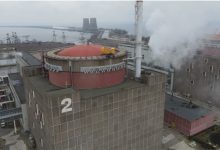
NASA’s Suni Williams and Butch Wilmore will have to spend another week aboard the ISS as experts struggle to fix their spacecraft
NASA astronauts Butch Wilmore and Suni Williams © Getty Images / Paul Hennessy; Anadolu
Two NASA astronauts are stranded aboard the International Space Station as their spacecraft, a Boeing Starliner, continues to experience technical difficulties. The two scientists, who traveled to the station on June 6, were originally meant to stay for only one week.
During a press conference on Tuesday, NASA and Boeing announced that the two Americans – Suni Williams and Butch Wilmore – will not be coming back to Earth before June 26 as experts are struggling to fix the spacecraft.
The Boeing CST-100 Starliner initially registered several mechanical issues during its maiden manned launch on June 6. En route to the station, the crew reported problems with five thrusters and four helium leaks, and another leak was revealed soon thereafter. Prior to the flight, the company also stated that the spacecraft already had a “small helium leak” but insisted it was not a critical “safety of flight issue” and could be managed.
NASA’s Commercial Crew Program manager Steve Stich explained on Tuesday that the reason for the hold up was the agency’s desire “to give our teams a little bit more time to look at the data, do some analysis, and make sure we’re really ready to come home.”
Read more
Stitch also insisted that NASA doesn’t currently foresee a scenario in which the two astronauts would not be able to come home on the Starliner. The return trip is currently scheduled for June 26, when the crew will attempt to land in the White Sands area of New Mexico. If that proves impossible, then the next “prime opportunity” would be a week later on July 2.
Despite the extended delay, NASA’s Dana Weigel, who manages the agency’s ISS program, said the crew is feeling positive. Boeing’s vice president and program manager for the Commercial Crew Program, Mark Nappi, has also said the crew was taking advantage of the extra time and saw the situation as an “opportunity” to do more work.




